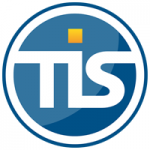How much are you paying your bank ?
| 30-1-2017 | Patrick Kunz |

Does your bank send you a monthly invoice how much they charge you on banking costs? Some do but some don’t. Even if you receive an overview of these costs – do you look at them? Often organizations don’t and that’s a pity. A bank is as much a services provider as other suppliers of the company. Of course changing banks is not something you do every year but that does not mean you should never do it or never have a look at your banking costs.
Allthough even if another bank proves to be less expensive, it should not always imply to change the bank, as the indirect costs of a bank change should also be taken into account and you always have the option to renegotiate.
The first step when looking at your banking costs is how your payments look like. Is your company doing only national payments or SEPA or are you transferring (or receiving) money from outside the SEPA region and/or transferring non-EUR payments? This matters because a national payment and SEPA payment will cost you around 0,10 EUR per transaction while an international payment can costs on average EUR 6. The potential saving on international payments is much higher.
There are several ways to reduce the transactions costs:
- Reduce the amount of transactions. This is often easier said then done because you have to pay your bills and your customers pay theirs to you. However, with international companies there is often a number of intercompany transactions. These transactions do not necessarily have to go via the bank account. They could be settled via in house bank or internal current accounts. Often these intercompany transactions are international transfers or non-EUR payments which brings me to the next point
- Analyse the foreign currency transactions. As said above these transactions costs around EUR 6 per transaction (and I have seen banks charge up to EUR 50 per transaction) so the saving potential is big, if you do a lot of these transactions. You can ask yourself do you need to pay your supplier in foreign currency? Can I receive my invoice in EUR instead of foreign currency? Often complex questions leading to more questions (hedging?). It is not always possible to change transacting in foreign currency so another solution to reduce transactions costs is to move the bank account to the home country of the currency. This way the “foreign” currency becomes domestic and therefore transactions costs move from international (EUR 6) to domestic (EUR 0,10), a big potential. Of course there are some limitations to this.
Have a look at the total return of your bank. Your bank is one of your suppliers so it makes sense to compare the costs of the supplier to their competitors, especially if you have multiple banking partners. As for suppliers you do not always choose the cheapest but also take into account service level and worldwide availability. It does make sense to compare banking costs every 3 years for market conformity. My advice would be to take into account all banking costs (so also FX deals, corporate finance, trade finance, guarantees). Banks often cross sell their products and the total fees are never visible so you have to gather this information yourself. I prefer to calculate the RAROC (Risk adjusted return on capital) for each banking partner. This way you can easily compare the total return per bank. This helps a lot when renegotiating fees or (new) credit lines. RAROC calculation is not easy and it takes often quite some work to gather all information but once implemented it is a nice tool for companies with multiple banking partners to compare (and rank) banks.
Treasury, Finance & Risk Consultant/ Owner Pecunia & Finance BV

 Last November The European Payments Council (EPC) launched the single euro payments area (SEPA) instant credit transfer (SCT Inst) scheme. The scheme will be live in November 2017 and allows the European banks to propose innovative, digital, and fast payment solutions to their customers. The EPC describes the SCT Inst scheme as “a world first, enabling individuals, businesses, corporates and administrations to make instant euro credit transfers between accounts across an international area that will progressively span over 34 European countries. This new scheme is a revolution for the traditional 9 to 5/ weekdays only operating banks. Will it also block the way to relative newcomers like Paypal? Will the banks seize this opportunity and strike back?
Last November The European Payments Council (EPC) launched the single euro payments area (SEPA) instant credit transfer (SCT Inst) scheme. The scheme will be live in November 2017 and allows the European banks to propose innovative, digital, and fast payment solutions to their customers. The EPC describes the SCT Inst scheme as “a world first, enabling individuals, businesses, corporates and administrations to make instant euro credit transfers between accounts across an international area that will progressively span over 34 European countries. This new scheme is a revolution for the traditional 9 to 5/ weekdays only operating banks. Will it also block the way to relative newcomers like Paypal? Will the banks seize this opportunity and strike back?
 At its introduction time SEPA seemed to be just another (more complicated) payment method, more imposed by EU-regulations than a market requirement. For international for exporting companies however, there is a very interesting bonus in the form of SEPA’s possibilities in the field of direct debit. Foreign bank accounts can be debited (for receivables) in the same way as Dutch bank accounts.
At its introduction time SEPA seemed to be just another (more complicated) payment method, more imposed by EU-regulations than a market requirement. For international for exporting companies however, there is a very interesting bonus in the form of SEPA’s possibilities in the field of direct debit. Foreign bank accounts can be debited (for receivables) in the same way as Dutch bank accounts. Jan Meulendijks – Cash management, transaction banking and trade professional
Jan Meulendijks – Cash management, transaction banking and trade professional Dear community members, we would like to bring this TIS webinar under your attention. On November 3th between 04:00 and 04:30 PM TIS will host : SEPA in Sweden – The key to a smooth transition. We think it will be an interesting session and hope to hear your reactions afterwards!
Dear community members, we would like to bring this TIS webinar under your attention. On November 3th between 04:00 and 04:30 PM TIS will host : SEPA in Sweden – The key to a smooth transition. We think it will be an interesting session and hope to hear your reactions afterwards! This week an article about the underestimation of cash management on LinkedIn caught my attention. 50% of the companies even doesn’t see the added value of a good cash flow forecast! This does not surprise me and therefore gave me a reason to pick up the pen and write another article on how to improve your cash conversion cycle!
This week an article about the underestimation of cash management on LinkedIn caught my attention. 50% of the companies even doesn’t see the added value of a good cash flow forecast! This does not surprise me and therefore gave me a reason to pick up the pen and write another article on how to improve your cash conversion cycle!
 Imagine it will be possible to transfer money within several seconds from any bank account to another bank account. 24 hours a day, 7 days a week. It will open large business opportunities enabling many innovative payments use cases.
Imagine it will be possible to transfer money within several seconds from any bank account to another bank account. 24 hours a day, 7 days a week. It will open large business opportunities enabling many innovative payments use cases. 




